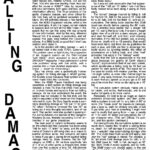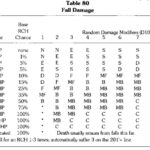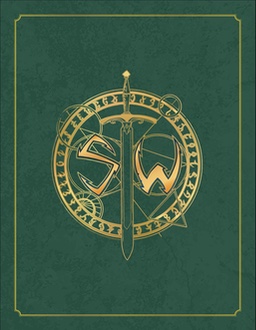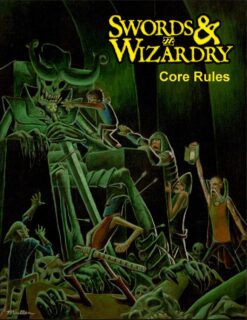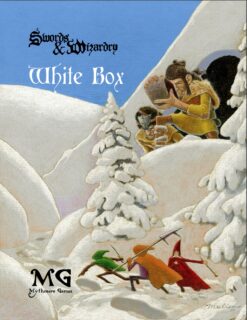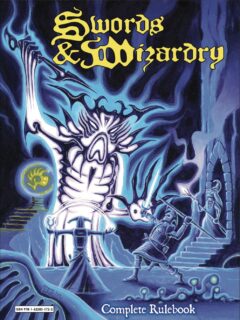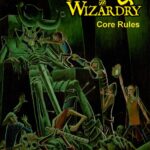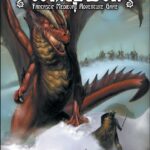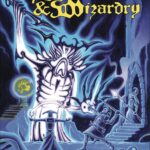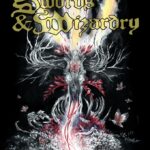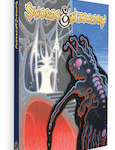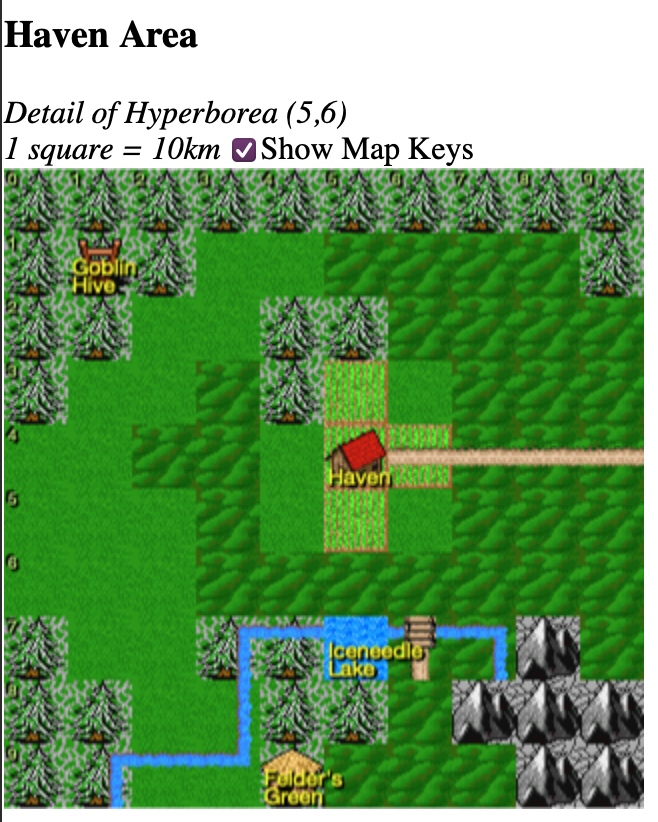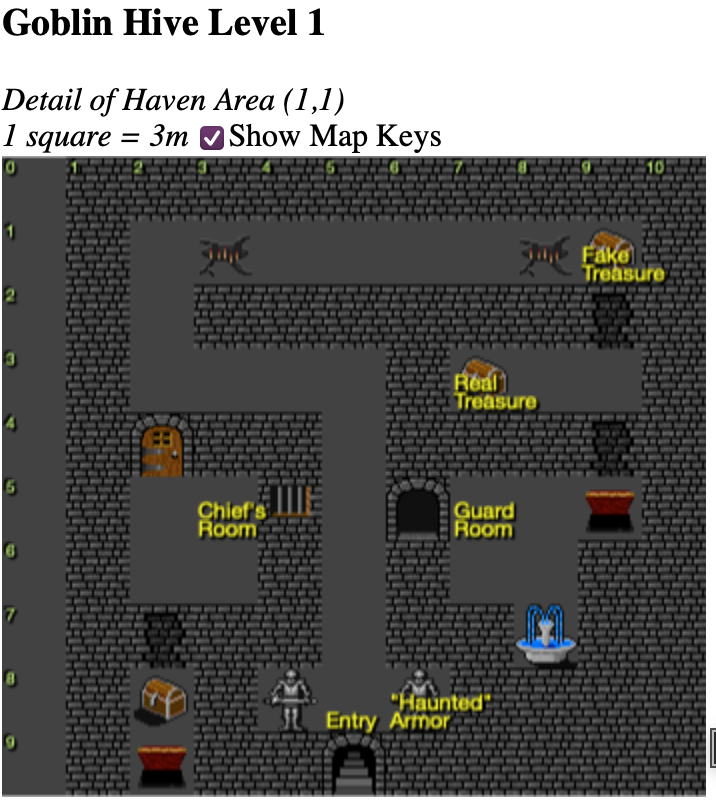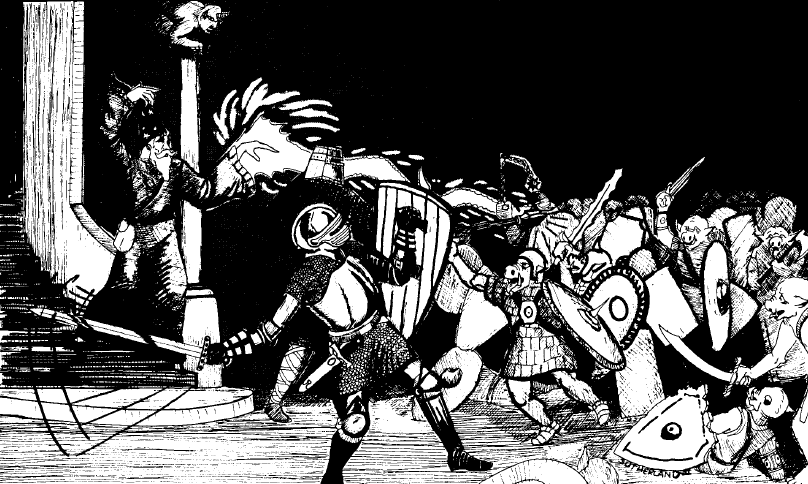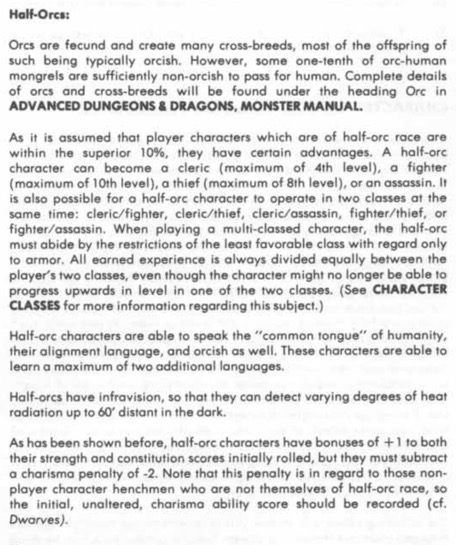As noted in Review: Swords & Wizardry Complete Revised, there's no rules for falling damage. Never have been. Referees just rely on folklore and other games to figure it out.
Researching OD&D sources is frustrating, but if I've read all this, you should too!
It never clearly says in OD&D (books 1-3, supp 1-4, nor Holmes). In Book III, there's a Chainmail example of 1 die save on 5 or 6 per level (10'?) fallen.
AD&D Player's Handbook (1978, but non-canon to me), it's 1d6 for each 10', and the commentary makes it clear that's the meaning intended. You wouldn't say "this is not realistic" if falling was super dangerous.
FALLING DAMAGE
Falling into pits, from ledges, down shafts, and so forth will certainly cause damage unless the fall is broken. While such falls could break limbs and other bones, it is probable that your referee will simply use a hit points damage computation based on 1d6 for each 10' of distance fallen to a maximum of 20d6, plus or minus adjustments for the surface fallen upon, This treatment gives characters a better survival chance, although it is not as "realistic" as systems to determine breaks, sprains, dislocations, internal organ damage, etc.
Basic Dungeons & Dragons (1981), same. Interesting note that climbing is per 100'!
Climb Steep Surfaces, when failed, will result in a fall. The thief will take 1-6 (1d6) points of damage for each 10 feet fallen. This roll should only be made once per 100' of climb attempted. If failed, the fall will be from halfway up the surface.
Suddenly in Dragon # 69 (Jan 1983), in a sidebox in the Thief-Acrobat class, Gygax claims that it was cumulative ALL ALONG.
Falling damage
The correct procedure for determining falling damage in the AD&D game system is to roll 1d6 per 10' fallen, cumulative. Since a falling body accelerates quickly, the damage mounts geometrically: 2d6 for the second 10 feet fallen, 3d6 for the third 10 feet, etc. The maximum of 20d6 is therefore reached after a fall of approximately 60 feet for most characters. A thief-acrobat can often fall further distances, but the same 20d6 maximum should be applied. The rationale behind this system will discussed in the next issue (# 70) of DRAGON Magazine.
Note you would also not use 20d6 as a limit if you were counting 1d6, 3d6, 6d6, 10d6, 15d6, 21d6 all along.
Next issue (Feb 1983), he makes Frank Mentzer carry his water and blames some editor (Mike Carr?).
Gary has always used a geometrically increasing system for falling damage in AD&D games; the trouble arose because that system simply never made it into the rule books. When the AD&D Players Handbook was being assembled, a brief section on falling damage was included: a mere 7 1⁄2 lines that offers more advice on broken bones and sprains than on falling damage. As we now understand the event, the section was not included in the first draft, and the editors requested a brief insert on this frequently referred-to topic. So Gary hastily wrote a sentence describing damage as “1d6 per 10’ for each 10’ fallen.” Someone removed the “per 10’” as being (so it was thought) redundant, and off we went. That section was later quoted in passing in the Aerial Adventures section of the Dungeon Masters Guide, thereby becoming further entrenched in our game procedures.
My bullshit meter goes off the scale at this sudden Invention of Lying level retcon. But is it a better rule?
AD&D 2nd Edition (1989, again non-canon to me) has this lengthy rebuttal:
Player characters have a marvelous (and, to the DM, vastly amusing) tendency to fall off things. generally from great heights and almost always onto hard surfaces. While the falling is harmless, the abrupt stop at the end tends to cause damage.
When a character falls. he suffers 1d6 points of damage for every 10 feet fallen, to a maximum of 20d6 (which for game purposes can be considered terminal velocity).
This method is simple and it provides all the realism necessary in the game. It is not a scientific calculation of the rate of acceleration, exact terminal velocity, mass, impact energy, etc. of the falling body.
The fact of the matter is that physical laws may describe the exact motion of a body as it falls through space, but relatively little is known about the effects of impact. The distance fallen is not the only determining factor in how badly a person is hurt. Other factors may include elasticity of the falling body and the ground, angle of impact, shock wave through the falling body, dumb luck, and more.
People have actually fallen from great heights and survived, albeit very rarely. The current record-holder, Vesna Vulovic, survived a fall from a height of 31,33O feet in 1972, although she was severely injured. Flight Sergeant Nicholas S. Alkemade actually fell 18,000 feet—almost 3.5 miles—without a parachute and landed uninjured!
The point of all this is roll the dice, as described above, and don't worry too much about science.
The 3.0 SRD is typically boring, legalistic, but continues this standard:
FALLING
Falling Damage: The basic rule is simple: 1d6 points of damage per 10 feet fallen, to a maximum of 20d6.
If a character deliberately jumps instead of merely slipping or falling, the damage is the same but the first 1d6 is nonlethal damage. A DC 15 Jump check or DC 15 Tumble check allows the character to avoid any damage from the first 10 feet fallen and converts any damage from the second 10 feet to nonlethal damage. Thus, a character who slips from a ledge 30 feet up takes 3d6 damage. If the same character deliberately jumped, he takes 1d6 points of nonlethal damage and 2d6 points of lethal damage. And if the character leaps down with a successful Jump or Tumble check, he takes only 1d6 points of nonlethal damage and 1d6 points of lethal damage from the plunge.
Falls onto yielding surfaces (soft ground, mud) also convert the first 1d6 of damage to nonlethal damage. This reduction is cumulative with reduced damage due to deliberate jumps and the Jump skill.
Falling into Water: Falls into water are handled somewhat differently. If the water is at least 10 feet deep, the first 20 feet of falling do no damage. The next 20 feet do nonlethal damage (1d3 per 10-foot increment). Beyond that, falling damage is lethal damage (1d6 per additional 10-foot increment).
Characters who deliberately dive into water take no damage on a successful DC 15 Swim check or DC 15 Tumble check, so long as the water is at least 10 feet deep for every 30 feet fallen. However, the DC of the check increases by 5 for every 50 feet of the dive.
Arduin Grimoire has a complex table, RCH = Random Critical Hit (Arduin crits are murder), others are Broken, Crushed, Dislocated, bruisE, Fracture, Multi, No damage, Sprain. I would never use this, but it's on par with linear damage until far up.
Conclusion
I'm certainly going to stick with 1d6 per 10' linear, but it should increase some chance of injury or death. At low Levels the HP damage is going to be the deadly factor, so it doesn't matter if there's also injury. At higher Levels, falling damage equivalent to your Level should be highly risky, and even moderate falls should have some risk.
Falling
Characters who fall more than 5' take d6 damage per 10' to a maximum of 20d6. If fallen 20' or more, make a Save vs Paralysis, + DEX bonus, –1 per 10' past the first, on failure roll d6 to see what you landed on:
- Head. Instant death. You needed that, roll a new character.
- Left arm. Broken, cannot hold shield or 2-handed weapon, or cast spells.
- Right arm. Broken, cannot hold weapon, or cast spells.
- Torso. Broken ribs, half STR, CON.
- Left leg. Broken, cannot move.
- Right leg. Broken, cannot move.
Cure Serious Wounds or Restoration will repair all but the head, otherwise takes 2d4 weeks recovery.
(note I don't have Clerics, but there are items or rituals which can produce these effects)
I made a table to better understand the odds here (assuming Save 15 at 1st-Level, +1 bonus for Paralysis), and I think I'm good with this. A 3rd-Level Thief with DEX 15 has a 50% chance to drop 50' with nothing broken, a 1st-Level Magic-User has 20%. HP damage is much more likely to kill them.
| Distance | Level: 1 | 2 | 3 | 4 | 5 | 6 | 7 | 8 | 9 |
|---|---|---|---|---|---|---|---|---|---|
| 20' | 14 | 13 | 12 | 11 | 10 | 9 | 8 | 7 | 6 |
| 30' | 15 | 14 | 13 | 12 | 11 | 10 | 9 | 8 | 7 |
| 40' | 16 | 15 | 14 | 13 | 12 | 11 | 10 | 9 | 8 |
| 50' | 17 | 16 | 15 | 14 | 13 | 12 | 11 | 10 | 9 |
| 60' | 18 | 17 | 16 | 15 | 14 | 13 | 12 | 11 | 10 |
| 70' | 19 | 18 | 17 | 16 | 15 | 14 | 13 | 12 | 11 |
| 80' | 20 | 19 | 18 | 17 | 16 | 15 | 14 | 13 | 12 |
| 90' | 21 | 20 | 19 | 18 | 17 | 16 | 15 | 14 | 13 |
| 100' | 22 | 21 | 20 | 19 | 18 | 17 | 16 | 15 | 14 |
